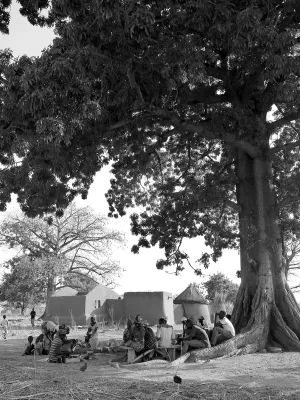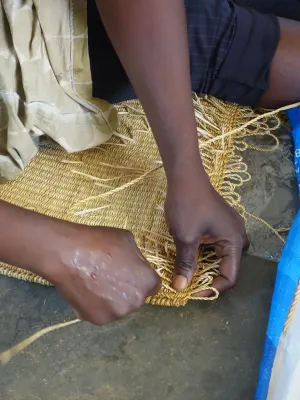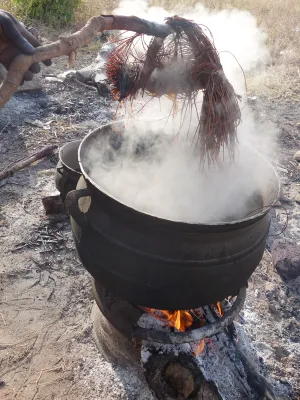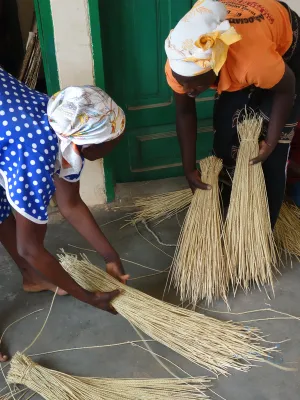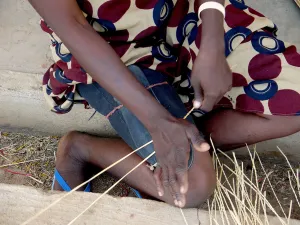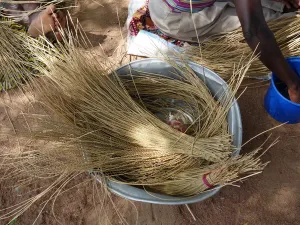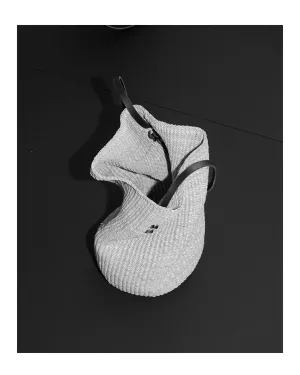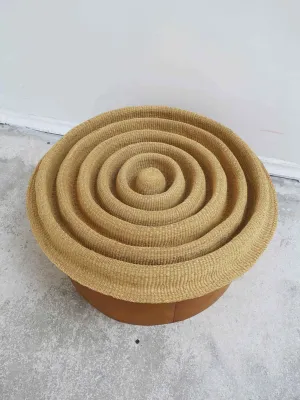I like raw and humble materials. I got interested in straw and dried grass because the contrast between their simplicity and their golden colour says something about our relationship with the materials and objects that surround us.
In Niger, for example, women used to make jewellery from straw inlaid in a beeswax base. They only wore them in the evening, when the sun did not melt the wax and the half-light reinforced the illusion of a golden necklace. Reading an article about French farmers burning their straw after harvesting, due to the lack of market value, was the inspiration for my Master's thesis on this material (Design Academy Eindhoven, NL, 2013).
The fibre used in Ghana for basketry comes from a wild grass, Pennisetum purpureum, commonly known as 'elephant grass'. Each fibre has to be split and twisted before being woven, and it takes about three days to make a medium-sized basket. This technique, which is time-consuming but produces flexible and tightly woven baskets, is mainly used by women.
In my practice as a designer, I need to manipulate the material to explore its forms, which is why I regularly go to Ghana to be with the weavers at the craft centre. With a group of about fifteen craftswomen, we start from my designs and experiment. It is an enriching practice for all of us, where the sharing of ideas and knowledge is essential. We develop techniques, invent new shapes, new features - we convince ourselves that a certain technique is possible, sometimes realising that it is not. It's very intense and productive.
We made the first models in the winter of 2014/2015 and since 2018 the same group of about 50 basket weavers has been making Akamae bags. This continuity allows us to develop techniques and to make more complex basketry than the average. The resulting boldness of the concepts is the hallmark of our collaboration.
This seasonal work allows the craftswomen to combine their work as basket weavers with their work as farmers. Each weaver is independent. The handicraft centre we work with trains the weavers in groups for each new model and organises production according to the orders. The price of each basket is then decided collectively.
My collaboration with the Ghanaian basket weavers is a long-term project that will gradually branch out into areas other than fashion accessories.
The Akamae bag series is enriched each year with new models and is available in different colours and patterns. You can see an overview below.

